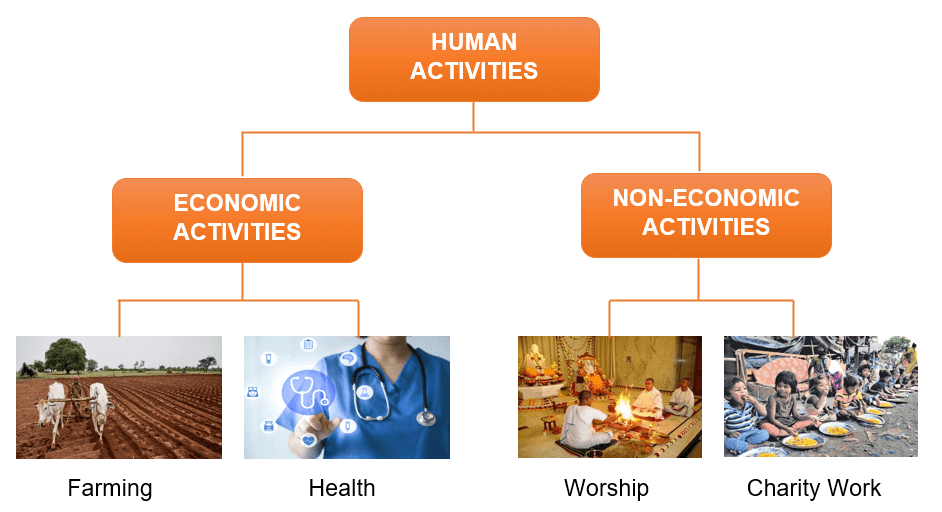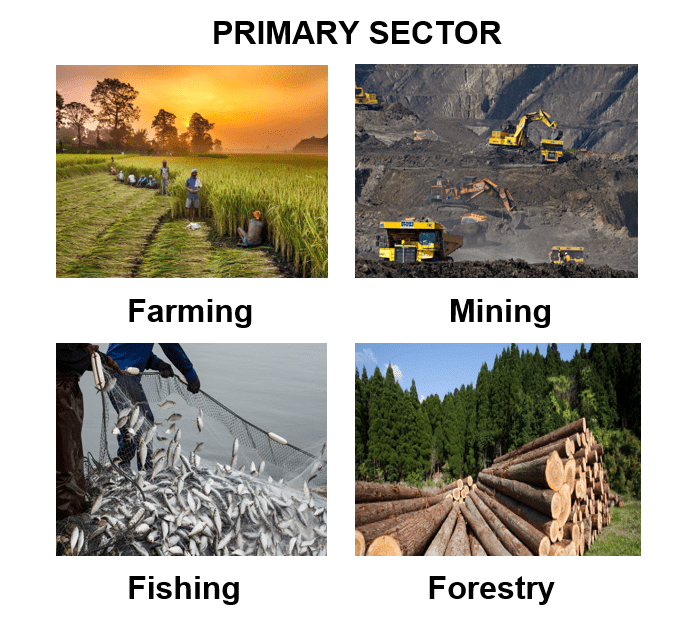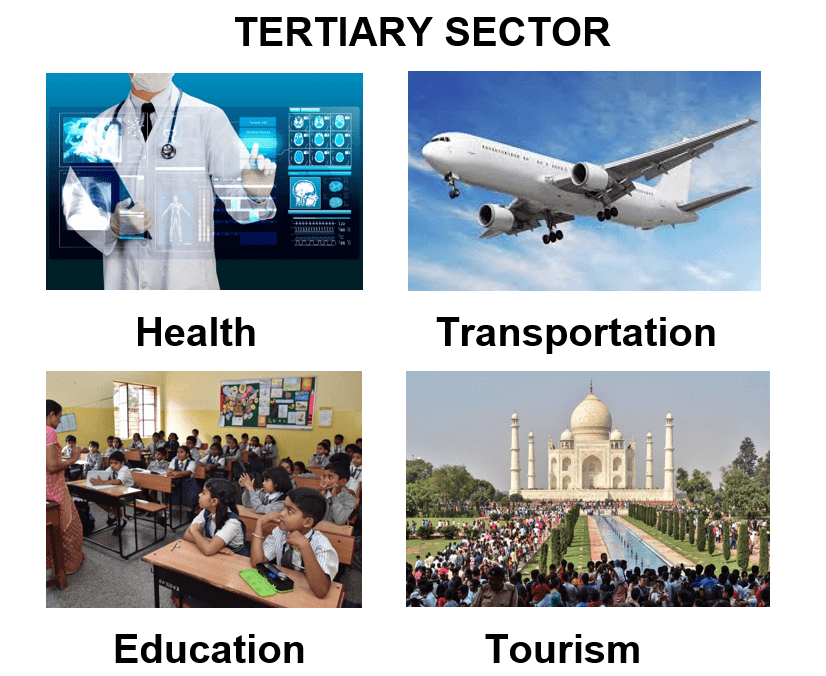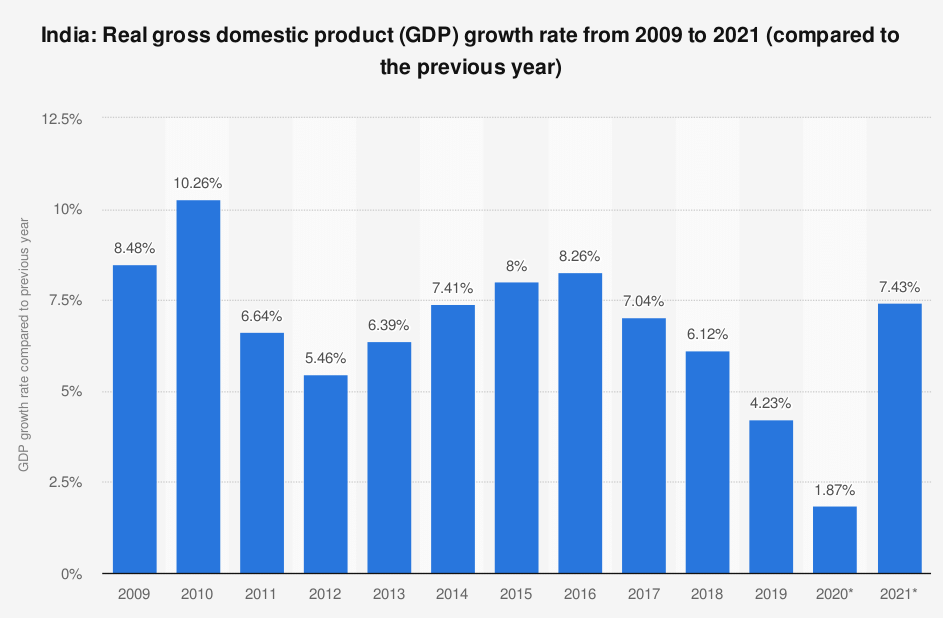Class 9 Exam > Class 9 Notes > Economics for Class 9 > Key Concepts - People as Resource
Key Concepts - People as Resource | Economics for Class 9 PDF Download
Human beings perform many activities which can be grouped into economic and non-economic.
- Economic Activities: Economic activities refer to those activities of man which are undertaken for a monetary gain or to satisfy his/her wants. The activities of workers, farmers, shopkeepers, manufacturers, doctors, lawyers, taxi drivers, etc. fall under this category.
- Non-Economic Activities: Non-economic activities are ones that are not undertaken for any monetary gain. These are also called unpaid activities.
Example: Puja-path, housekeeping, helping the poor or disabled, etc.
Economic Activities by Men and Women
Classification of Economic Activities
Various economic activities can be classified into three main sectors:
- Primary Sector: The primary sector includes activities like agriculture, forestry, animal husbandry, fishing, poultry, farming and mining. In this sector, goods are produced by exploiting nature.

- Secondary Sector: In the secondary sector, manufacturing (small and large) and construction activities are included.

- Tertiary Sector: The tertiary sector (also called the service sector) provides various types of services like transport, education, banking, insurance, health, tourism, etc.

- Market Activities and Non-Market Activities: Economic activities, i.e. production of goods and services can be classified into market activities and non-market activities.
(i) Market activities are performed for remuneration.
(ii) Non-market activities are the activities carried out for self-consumption.
Question for Key Concepts - People as Resource
Try yourself:Which of the following is the most labour absorbing sectors of the Indian economy?
View Solution
- Activities of Women: Women generally look after domestic affairs like cooking food, washing clothes, cleaning utensils, housekeeping and looking after children.
- Human Capital: Human capital is the stock of skill and productive knowledge embodied in human beings. Population (human beings) become human capital when it is provided with better education, training and health care facilities.

- People as a Resource: People as a resource is a way of referring to a country’s workforce in terms of their existing skills and abilities.
- Human Capital Formation: When the existing human resource is further developed by spending on making the workforce more educated and healthy, it is called human capital formation.
Quality of Population
- The quality of population depends upon the literacy rate, life expectancy and skills formation acquired by the people of the country.
- Role of Education: Education is the most important component of human resource development. In view of its contribution towards the growth of the society, government expenditure on education as a percentage of GDP rose from 0.64% in 1951-52 to 3.98% in 2002-03. However, our national goal is 6% of GDP.

- Health: Health is another very important component of human resource development. The efficiency of workers largely depends on their health. There has been considerable improvement in the country’s health standard.
Example: The life expectancy at the time of birth in India rose from 37.2 years in 1951 to 63.9 years in 2001. Similarly, the infant mortality rate has come down from 147 to 70 during the same time period. - Unemployment: Unemployment is said to exist when people who are willing to work at the prevailing wage rates cannot find jobs. When we talk of unemployed people, we refer to those in the age group of 15-59 years. Children below 15 years of age and the old people above 60 are not considered while counting the number of unemployed.
- Nature of Unemployment in India
(i) Seasonal unemployment occurs when people fail to get work during some months of the year (that is, during off-season). Farm labourers usually face this kind of problem.
(ii) Disguised unemployment is another kind of unemployment found in rural areas. Such kind of problem arises due to the excessive pressure of the population on agriculture. Disguised unemployment refers to a situation wherein the number of workers in a job is more than actually required to do the job. The extra number of workers are disguisedly unemployed. - Consequences of Unemployment
(i) Unemployment leads to wastage of manpower resources.
(ii) Unemployment tends to increase the economic overload that is the dependence of the unemployed on the working population.
(iii) Unemployment may lead to an increase in social unrest and tension.
Question for Key Concepts - People as Resource
Try yourself:Which of the following sectors faces the problem of seasonal unemployment?
View Solution
The document Key Concepts - People as Resource | Economics for Class 9 is a part of the Class 9 Course Economics for Class 9.
All you need of Class 9 at this link: Class 9
|
3 videos|53 docs|15 tests
|
FAQs on Key Concepts - People as Resource - Economics for Class 9
| 1. What are economic activities? |  |
| 2. How do men and women participate in economic activities? |  |
Ans. Men and women participate in economic activities in different ways. Men are usually engaged in activities such as agriculture, manufacturing, construction, and transportation. Women, on the other hand, are engaged in activities such as handicrafts, small business, and service sector jobs such as nurses and teachers.
| 3. What is the importance of people as a resource? |  |
Ans. People are considered the most important resource in any economy. They possess skills, knowledge, and abilities that are needed for economic development. The quality of the population determines the level of development in a country. A skilled and educated population can contribute to economic growth and social development.
| 4. What is the role of education in economic development? |  |
Ans. Education plays a crucial role in economic development. It helps in the development of human capital, which is essential for economic growth. Education provides individuals with the skills and knowledge needed to participate in economic activities. It also helps in reducing poverty and income inequality by providing better job opportunities.
| 5. How can the participation of women in economic activities be increased? |  |
Ans. The participation of women in economic activities can be increased by providing them with equal opportunities and access to resources. This can be done by implementing policies that promote gender equality, providing education and training to women, and creating a conducive environment for women to work. Women's participation in economic activities can also be increased by providing them with access to financial resources such as loans and credit facilities.
Related Searches

















